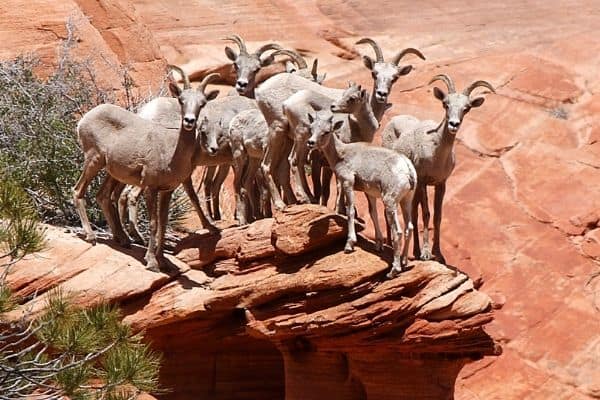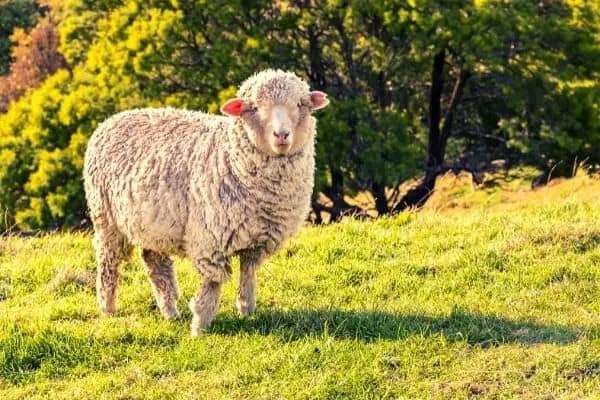There are many places for sheep to graze, but it is not always easy to determine their choice. The location on the ground that sheep like to stay at will depend on the type of land, conditions in the area, and their nutritional needs. So, where do sheep usually graze?
Sheep usually graze on grassland, pasture, rangelands, and lawns. Most of the significant areas where sheep graze are located in the northern hemisphere are often referred to as sheep ranches or sheep farms. Sheep grazing terrains range from rugged mountainous landscapes to flatlands; they are agile livestock.
Let’s explore more about the typical environments for sheep grazing and some interesting facts about sheep grazing habits
Where Do Sheep like to Graze
Sheep is one of the earliest domesticated livestock. They are versatile livestock breeds both in their climatic adaptation and benefits to the farmer. The benefits range from products to agricultural diversity to income generation.
There are close to 200 sheep breeds kept by farmers all over the world. If you are a farmer with some grazing land to spare, you can consider keeping some sheep to enjoy their milk, meat or sell some wool.
Sheep adapt easily to the most extreme climatic conditions. You can find sheep in mountain ranges and also in semi-arid areas.
A majority of sheep breeds like to graze in places with adequate pasture. This can be grasslands, that can range from year-long plains to seasonal grasslands.
Also, managed grazing is a common practice in nature conservation areas as well as in commercial sheep industry.
Sheep are herbivores, and the primary food of a sheep is grass. So the grass is a major component in their diet, comprising about 70% of it. And this is why they usually spend their days grazing freely in open fields-to get their fill!
Sheep grazing terrains range from rugged mountainous landscapes to flatlands;

Bighorn Sheep in Zion
There is one more thing worth mentioning here. The kind of terrain that a sheep can graze on depends on its body size, shape, and foot structure. So just like humans, different kinds of sheep have additional advantages in which terrain they can roam in. More on this later in the article.
The most common type of grazing for sheep is done in pastures, grassy meadows, or fields--the same places where farmers may grow many kinds of crops.
Some farmers allow their sheep to graze freely. In contrast, others choose to keep their sheep fenced in one specific area (usually a pasture or lot).
If you have a small farm and some dairy sheep, you will like your sheep to graze on the same grass as your cows. This way, there will be fewer problems with nutrient overload on the soil and more organic matter to add back into the ground.
Popular Sheep Grazing Areas Around the World
As mentioned before, sheep are agile creatures, and they adapt to various environments around the world. Temperate climates are the most suitable for sheep grazing.
Still, you can find that breeds like the Red Masai, Dorper, and the Persian Black Head do well in arid and semi-arid areas. These breeds of sheep are mainly kept for hair production.
In comparison, wool breeds such as Romney Marsh, Corriedale, and Merino prefer to graze in cooler climates.

Merino Sheep
As mentioned above, classification of sheep breeds may also depend on the altitudes in which they graze best.
For example, the Merinos like high altitudes while the Dorper and Red Maasai prefer medium and low altitudes. Therefore, in describing where sheep like to graze, we focus on the various types of breeds.

Dorper Sheep
There are vast grasslands in countries like Australia, New Zealand, South Africa, and India. These grazing lands are suitable for sheep and cattle as well. Some other countries, including the United States, Russia, and China, also have large areas ideal for sheep grazing.
Considering the climate in China, which varies from temperate conditions in the North and tropical climates in the south, wool sheep breeds will most probably do well.
Even the characteristic mountainous terrain attracts the wool breeds.
A wide variety of sheep breeds can be found in Australia owing to the varying climate and terrain. Wool and dual-purpose sheep breeds are bred in Australia.
The sheep grazing regions in Australia include Tasmania, New South Wales, South and Western Australia, and Victoria. The sheep ranches are located in the Southwest and Southeast of the area.
New Zealand is made up of steep hills and mountainous regions with a cool climate. Sheep breeds in this area are mostly wool breeds with the likes of Corriedale, Merino, and Romney Marsh. The sheep grazing farms exist in the North and South Islands.
Arid and semi-arid climates characterize the regions of North Africa can be expected to attract hair and dual-purpose breeds.
Sheep are also grazed in several areas in North and South America.
All in all, sheep are agile livestock and can be reared in most parts of the world.
How Long Do Sheep Graze in a Day?
Sheep graze for 6 to 8 hours a day if they only depend on pastures. Yeah, right, eight straight hours.
In a vast grazing land, they can move through 1.5 miles within the eight hours of grazing. That's quite a long journey for your sheep.
Therefore, keep them hydrated by fixing water points at strategic places in your grazing field. Also, note that clean water is fundamental to the health of your sheep. You can lose sheep through inadequate feeding and poor quality of drinking water.
It is worth mentioning that grazing time also depends on the size and shape of the animal. For example, smaller sheep with longer limbs can roam for a longer duration, but larger sheep with short legs can only graze for a shorter period.
In selective grazing, sheep eat different types of plants depending on their needs. For instance, if the grass is too high and tough to reach, they will eat shrubs or herbs. On the other hand, if there is not enough food and they are getting hungry, they go for the legumes.
This grazing behavior allows farmers to consider the personality of the sheep when it comes to feeding them.
Like any other livestock, sheep can stray if you do not have a strong fence. Stray coyotes can also take advantage of weak fences and rob you of your sheep. So note that strong fences and an excellent paddocking system help manage sheep grazing habits. You can also keep the guard dog within the grazing land to keep other stray animals away.
What are the benefits of sheep grazing
Sheep usually graze very close to the ground. This helps in conserving and restoring soil quality. Also, another benefit of sheep grazing is the fact that it can help control the growth of weeds. This is a great way to get rid of invasive weeds that would be difficult for humans to eradicate.
Additionally, sheep grazing in pastures helps prevent fires and the build-up of debris that can cause them.
Does sheep graze differently from Goats and Cattle?
Now that we know about sheep feeding habits, you may wonder if they graze differently from other livestock, that is, cows and goats.
The answer is yes. I know some people think cattle, sheep, and goats feed on grass alone because they are all ruminants. But they have completely different feeding habits.
In terms of grazing time, sheep take a minimum of six to eight hours. Cattle take the longest, 8-12 hours, while goats take at least for three hours to graze.
There is a noticeable difference in how sheep graze as compared to cattle and goats.
Sheep graze very close to the ground. They also consume places that cattle cannot fit, such as steep hillsides and rocky areas where cattle can not graze.
Cows usually like to eat tall grass and often graze 4 inches above the ground. They curl their tongue to hold the grass and take that into their mouth.
Sheep can do well in rugged and steep terrains and prefer weeds and forbs.
Cattle, on the other hand, will go for grass and do better on flatter terrains.
Goats usually feed on branches, twigs, vines, and shrubs. Goats are fascinating animals; they will prefer to feed on the highest branch they can reach while standing on their hind legs.
Final Thought
Just remember, sheep are meant for true grazing — Sheep usually graze on grass but will eat other plants as well. Sheep can graze on flat land as well as on hilly areas. Their grazing is beneficial for the pasture land as well because it helps to break up and aerate the soil.
If you are planning to keep cows and sheep together, read this article on The Symbiotic Relationship Between Sheep And Cows.
